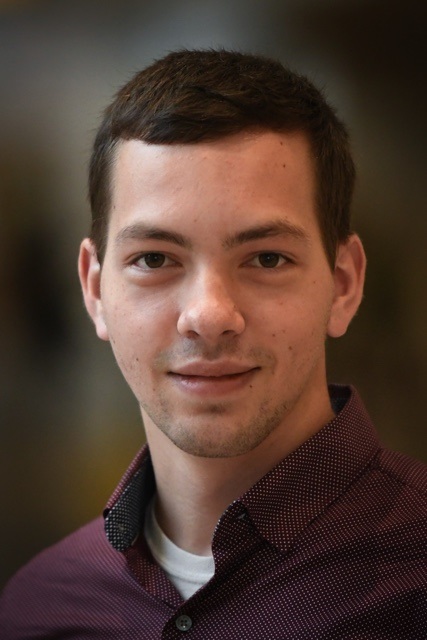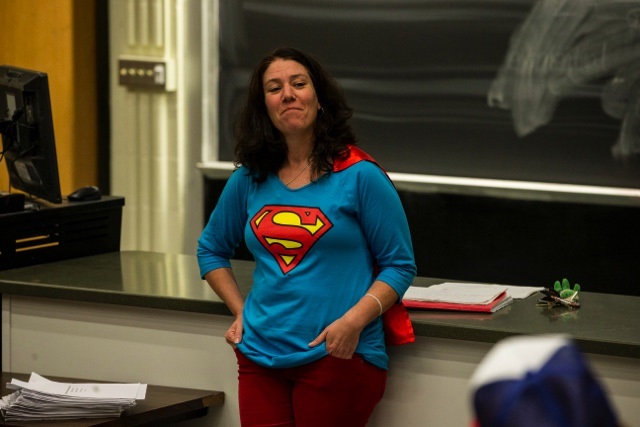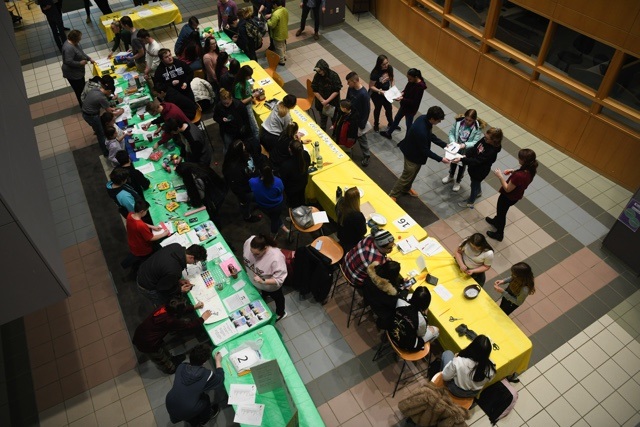
Hello! My name is Kyle Monette ’22, and I recently graduated from Clarkson with a bachelor’s degree in mathematics. Being in a pretty small department, I wanted to share with you some reasons why I love the math department here and why I chose to study math in the first place.
So let’s dive right in! Here are five reasons I chose to join the math department at Clarkson.
You can do anything you want after graduation.
This may not seem obvious at first, but I would argue, along with many professors, that it is true. As Professor Skufca has said before, the question is not what can you do with a math degree — it’s what can’t you do. Clarkson math graduates have gone on to academia, companies like IBM and Google, engineering firms, veterinary practices and so much more.

Math majors do not all become teachers. With a degree in math, you learn the foundations of critical thinking and logic. You take basic computer science courses to learn how to program, and you’re able to write MATLAB programs that numerically solve equations. Most of all, you learn how to solve real-world problems by converting them into a math problem, looking at it from different lenses and then figuring out a solution.
Companies are always looking to hire mathematicians because they have incredibly important skills that are not as prevalent in other degrees. Even if the company isn’t data- or statistically-focused, I promise you that they are looking for someone with a strong mathematical background.
The world is your oyster for research.
People commonly think that research in math is just solving equations or proving theorems. While that does occur, I would say that it is not the bulk of research. Rather, most mathematicians use their knowledge to apply math to existing problems as a tool to solve them.
For example, I was on a research project that is predicting the spread of an invasive aquatic plant in a nearby river. Our method relied on partial differential equations and running numerical simulations on the computer to solve them. (See how different math fields can come together on a project?) By adjusting parameters, we could determine where the plant would be at a future time, how abundant it would be, how fast it got there and how likely it was to spread to other regions of the river.

Some of my classmates did research in machine learning problems (that’s another whole blog post right there!). For instance, they put thousands of data points from medical patients into a computer program to have it predict if their tumors will become cancerous.
At Clarkson, there are professors who do research in bio-mathematics, control theory, numerical optimization, data science, statistics and many other fields. They welcome undergraduate and graduate students looking to assist on a research project with open arms. By now, it should be clear that research in mathematics has branches that extend far beyond numbers and algebra. In my opinion, our math department produces some of the most fascinating research at Clarkson.
No two mathematicians are the same.

One of the most intriguing aspects of mathematics is that there is not one right way to solve a problem because everyone thinks differently. Personally, I study analysis and linear algebra, which is a “pure math” topic, in that it lies solely within the field.
Some of my friends study “applied math,” the branch of mathematics that looks at the application of results to problems in physics, engineering, chemistry and more. That is not to say that these are distinct fields; that’s far from the truth. I use results from Calculus III in my research just as much as applied math gurus do. However, if we sat down to solve a problem, I might think about it abstractly and rely on theorems, while others might run computer simulations or even use a branch of math that I’ve never dealt with before.
When the chalk dust settles, we all have the same solution, and I think that is beautiful. It allows for excellent collaboration between peers!
Money and mathematical fame are out there for the taking.
The Clay Math institute proposed a list of seven problems in 2000 that come with a million-dollar prize (and mathematical fame!) if you can crack them. Such problems include the Riemann Hypothesis, the Navier-Stokes Equations, and P vs NP. To date, only one of these problems has been solved.
There are loads of other ones out there that are not on this list. I think the most fascinating part about these problems is that many high school students would understand them.
For example, can you create a 3 by 3 array with unique square numbers (numbers such as 1, 4, 9, 16, 25, etc) such that each row, column and diagonal add to the same number? Try it out! Maybe write some code to test it! Another problem is the Collatz Conjecture, which has sucked more time away from my homework than I care to admit!
Mathematics is the study of asking “why?”
If you’re someone who enjoys finding the answer to a problem or gets excitement by learning something for the first time, math might be for you. Several fields of mathematics have been created just because someone asked, “What if I do this instead?” or “Why does that work?” At Clarkson, math majors are encouraged to ask these questions even if the professor knows the answer, because it drives creativity and intuition.

The best example I can give of this is Femat’s Last Theorem. In the mid 1600s, a mathematician named Pierre de Fermat proposed a problem that went 300 years without a solution: Are there solutions to the generalized Pythagorean Theorem? That is, can we find three numbers x, y, and z such that xn+yn=zn for n>2? Try it with cube numbers! See if you can find a solution! (Spoiler alert: you won’t)
In the process of proving this result, which turned out to be false, we derived a massive amount of math. We spent hundreds of years looking at various ways to attack this problem. We proved other results along the way that have branched out on their own, as a method of cracking this problem. However, it all stemmed from one person asking, “Does the Pythagorean Theorem work for exponents other than 2?” In math, curiosity proved the next theorem.

Great blog, Kyle. I’m sharing this with my math teacher husband, so he can share with his high school classes!
I literally got teary eyed reading this! Thanks Kyle! Go Math!